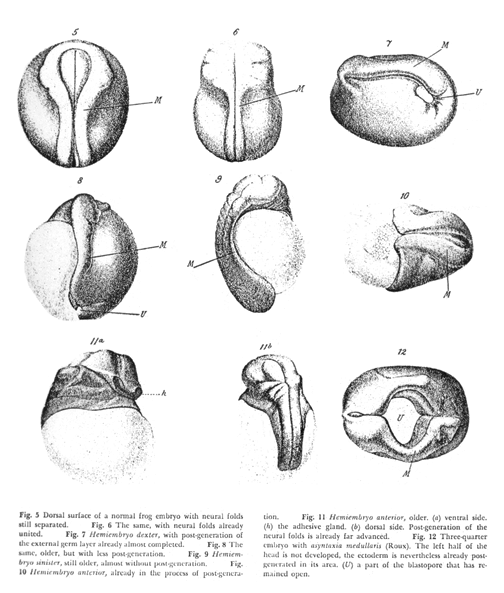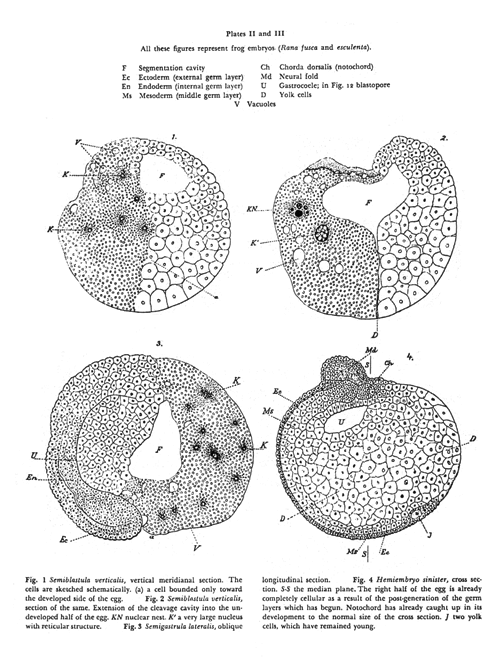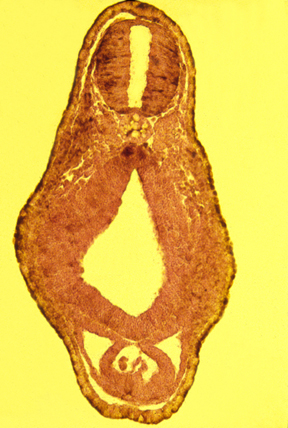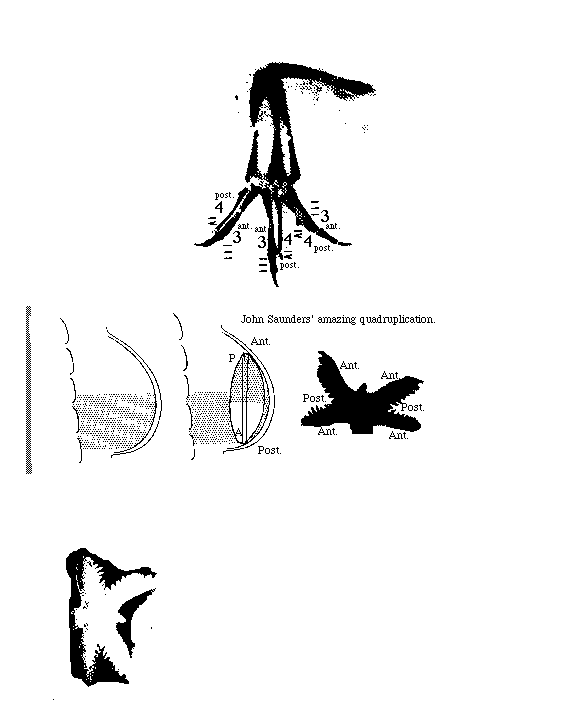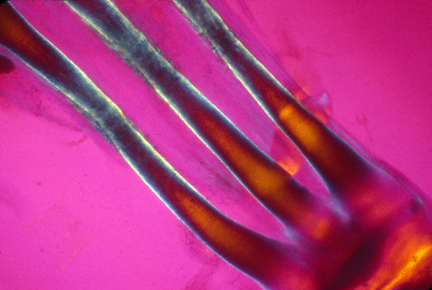Lecture February 17, 2014
Twinning, Conjoined Twins, and "Regulation" of body formation
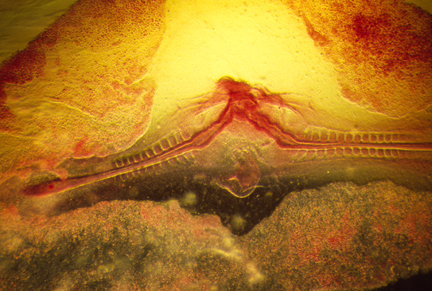
The Umbilical Cord connects the body to the extrambryonic membranes. Turtles, snakes etc. also have belly-buttons, incidentally, where their bodies were connected to their extra-embryonic membranes!
Many snakes are live-bearing: that means that the embryos develop inside the body of the mother snake. Copperheads are one of many examples.
No one knows much about the evolutionary steps leading to the chorion, amnion, etc. In particular, were the intermediate species egg-layers or live-bearers? Either is conceivable. There could have been intermediate versions of external eggs in which out-folded epithelial layers gradually surrounded the developing body, more and more completely (culminating in the evolution of the amnion and chorion). Alternatively, these structures could have gradually evolved in live-bearing intermediates between amphibians and reptiles. I don't know what kind of evidence we should look for, either in fossils or in genomes, that could prove or disprove either possibility. A closely related question is whether egg-white and egg shells evolved before or after the chorion, the amnions, and the allantois. I presume that the yolk sac evolved before all of them.
I value your opinion on these issues, and about what kind of evidence could decide them .
--------------------------------------------------------------------------------------------------------------------------------
About four per thousand human pregnancies produce identical twins.
Identical twins ("Monozygotic Twins") develop in three very different ways, which are distinguished based on whether the two embryos
-
~ 3 % share both their chorion and their amnion, or
~ 65 % share their chorion, but each is inside its own amnion,
~ 31 % are each inside a separate chorion and a separate amnion.
Each inside a separate chorion and a separate amnion Two separate trophoblasts
Share their chorion, but each is inside its own amnion, Two inner cell masses inside one trophoblast
Each inside a separate chorion and a separate amnion. Two primitive streaks on one inner cell mass
Only for this third form of twinning is there danger (possibility) that some parts of the twin's anatomy will be part of both their bodies (conjoined twins = so-called "Siamese twins").
Only a small minority of twins formed by two primitive streaks on the same inner cell mass are conjoined;
but none of the identical twins formed in the other two ways are ever conjoined.
Some very good embryologists (Lewis Held) visualize conjoined twinning as separate bodies forming, and then somehow getting merged. My interpretation (what I was taught) is that the same mass of cells gets subdivided into the organs of two bodies (as if two pots were molded from the same piece of clay, would be a possible analogy. I would appreciate being e-mailed any better analogy you can think of.)
A better question is: "What sort of evidence do we need to distinguish between alternative possibilities?
For those of you who now love the subject of symmetry, notice that conjoined twins are (nearly?) always mirror images of each other (at least, of those that survive).
This must be telling us some important facts about the normal control mechanisms of body formation. (but nobody knows, or notices). Even when not conjoined, twins formed from the same inner cell mass are (usually? always?) mirror images of each other. The twin on the right has a heart & intestines with reversed symmetry. This implies that the twin on the left is somehow dominant.


